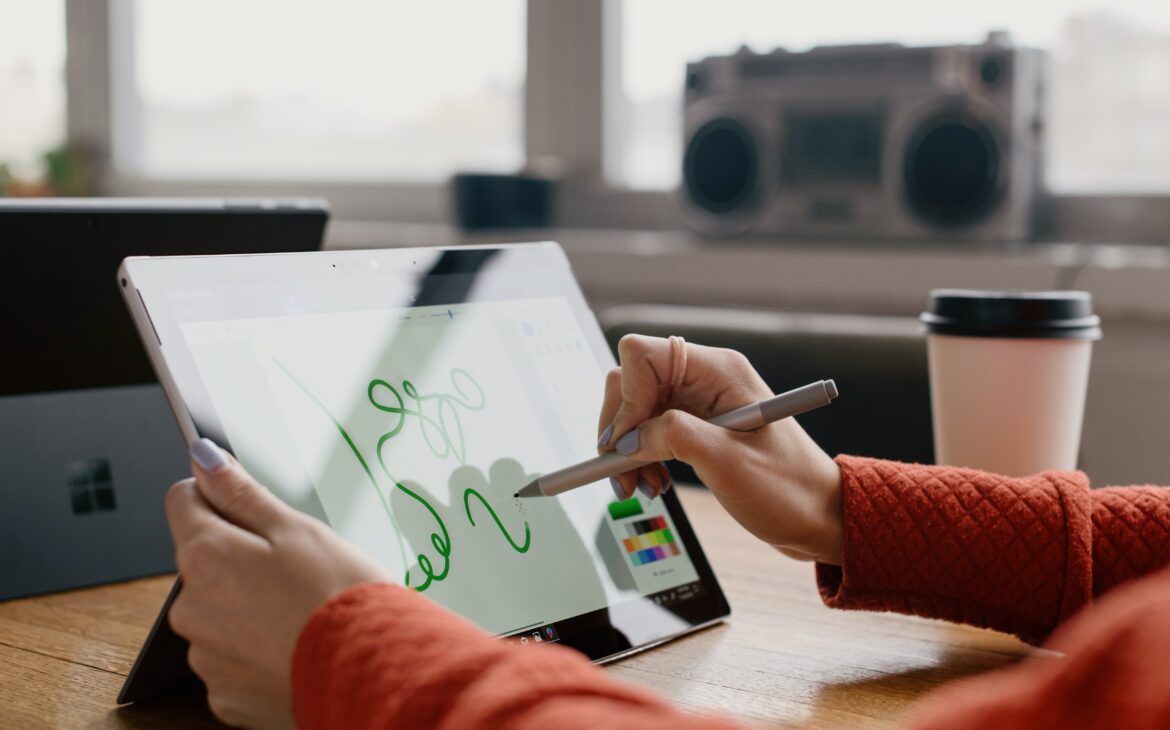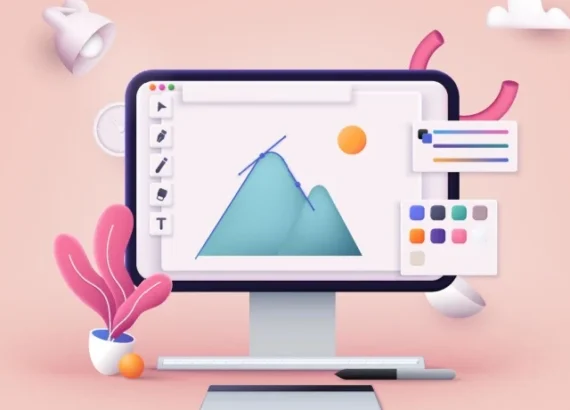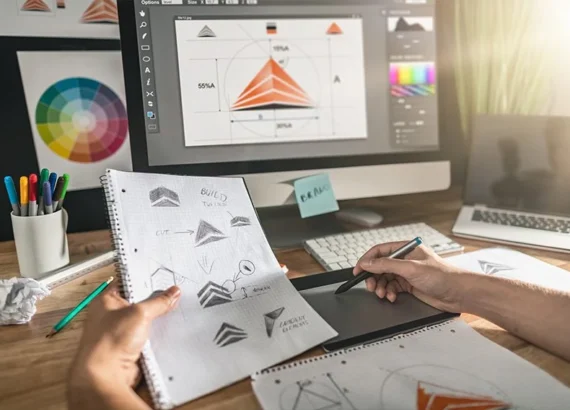Dare to be Different: Why Every Student Should Learn Graphic Design
Graphic design has become an integral part of our daily lives, shaping the way we perceive information, products, and brands. From the advertisements we see on billboards to the websites we navigate, graphic design plays a crucial role in conveying messages effectively and aesthetically. In an increasingly visual and digitally driven society, the significance of graphic design cannot be understated.
It not only captures our attention but also communicates complex ideas and emotions in a visually compelling manner. This article explores why every student should embrace graphic design, highlighting its potential to enhance creativity, critical thinking skills, visual communication abilities, and marketability. Moreover, it delves into how graphic design bridges the gap between art and technology and promotes digital literacy, ultimately paving the way for success in various fields. Start your journey towards becoming a well-rounded student with graphic design today.
1. Introduction: The Importance of Graphic Design in the Modern World
The Growing Significance of Graphic Design
Graphic design is no longer just about creating pretty pictures. In today’s digital age, it has become a vital tool for businesses and individuals alike. From websites to advertisements and social media campaigns, graphic design plays a crucial role in capturing attention and conveying messages effectively.
How Graphic Design Influences Various Industries
Graphic design has infiltrated almost every industry, transforming the way we interact with products and services. It shapes the visual identity of brands, making them memorable and recognizable. Whether it’s designing sleek user interfaces for apps or creating stunning packaging for products, graphic design is at the core of visual communication and branding strategies.
2. Enhancing Creativity and Critical Thinking Skills through Graphic Design
Graphic Design as a Catalyst for Creative Thinking
Graphic design is the perfect playground for creative minds. It encourages us to think outside the box, experiment with different colour palettes, and find innovative ways to visually convey messages. By exploring diverse design techniques and pushing our creative boundaries, we foster a mindset that embraces innovation and originality.
Developing Critical Thinking Abilities through Design Problem Solving
Graphic design involves more than just making things look good; it requires problem-solving skills. Designers have to analyze and understand the target audience, identify their needs, and develop effective visual solutions. This process cultivates critical thinking abilities, as designers have to evaluate different options and make informed decisions to communicate messages successfully.
3. Developing Visual Communication Skills for Effective Expression
In a world bombarded with information, grabbing attention and conveying messages quickly is crucial. Graphic design enables us to distil complex concepts into simple, visually appealing designs that engage and resonate with the audience. It allows us to communicate ideas, emotions, and stories with clarity and impact.
Learning to Design for Different Audiences and Contexts
Graphic design teaches us to adapt our visual language for different audiences and contexts. Whether it’s designing for a corporate brand or creating eye-catching social media graphics, understanding the target audience’s preferences and tailoring the design accordingly is essential. This versatility in design approach expands our communication skills and makes us more adaptable in various creative environments.

4. Empowering Students with Marketable and Transferable Skills
Graphic Design as a Valuable Skill in the Job Market
Graphic design is not only a creative pursuit; it is also a highly sought-after skill in today’s job market. With businesses increasingly relying on effective visual communication, employers value candidates with a strong foundation in design principles. So, by learning graphic design, students open doors to a wide range of exciting career opportunities.
Transferring Graphic Design Skills to Other Fields
What’s great about graphic design is that its skills are transferable. The ability to think critically, solve problems visually, and communicate effectively are valuable assets in various professions. Whether you pursue marketing, web development, or even entrepreneurship, the skills honed in graphic design will give you a unique advantage in any field you choose.
So, dare to be different and venture into the world of graphic design. Not only will you enhance your creativity and critical thinking, but you’ll also develop visual communication skills that can empower you both personally and professionally.
5. Fostering Innovation and Problem-Solving Abilities through Graphic Design
Using Design Thinking to Solve Complex Problems
Graphic design is not just about creating visually appealing images; it also involves problem-solving. By learning graphic design, students are exposed to the concept of design thinking—a problem-solving approach that focuses on understanding users, identifying challenges, and developing creative and innovative solutions. Design thinking encourages students to think critically, analyze problems from different perspectives, and come up with unique and effective solutions. These problem-solving skills are transferable to various aspects of life and can benefit students in both their personal and professional endeavours.
Encouraging Innovation and Creativity through Design Projects
Graphic design projects provide students with the opportunity to unleash their creativity and push the boundaries of traditional thinking. Through design projects, students can experiment with different concepts, styles, and techniques, encouraging them to think outside the box and explore new ideas. This creative freedom fosters innovation and allows students to develop their unique design aesthetic. Moreover, as students engage in design projects, they learn to embrace failure as a stepping stone to success, as experimentation often leads to the most groundbreaking ideas.
6. Bridging the Gap between Art and Technology in Education
The Intersection of Artistic Expression and Technological Tools
Graphic design beautifully bridges the gap between art and technology, incorporating artistic elements into digital mediums. By learning graphic design, students can combine their love for art with the power of technology, creating visually stunning and impactful designs. This intersection enables students to express their creativity in new and exciting ways, showcasing their artistic prowess through digital platforms, websites, and multimedia presentations.
Integrating Graphic Design into STEAM Education
Graphic design plays a vital role in STEAM (Science, Technology, Engineering, Arts, and Mathematics) education by incorporating the arts into traditionally STEM-focused subjects. By integrating graphic design into STEAM curricula, students gain a holistic understanding of how art and design contribute to solving real-world problems. This interdisciplinary approach nurtures well-rounded individuals who can think critically across various disciplines, fostering the next generation of innovators.
7. Promoting Digital Literacy and Technological Proficiency in Students
Developing Proficiency in Design Software and Tools
In today’s digital age, having digital literacy and proficiency in design software and tools is crucial. Learning graphic design equips students with the skills to navigate industry-standard design software such as Adobe Creative Suite, giving them a competitive edge in the job market. These technical skills are highly sought after in fields ranging from marketing and advertising to web design and user experience. By mastering design software, students develop a valuable skill set that can open doors to exciting career opportunities.
Nurturing Digital Literacy for Effective Communication in the Digital Age
Communication has evolved significantly with the rise of digital platforms and social media. Graphic design education empowers students to effectively communicate through visuals in the digital age. By learning the principles of design, students gain an understanding of how to convey messages, emotions, and ideas through visual elements. This digital literacy enables them to create engaging and impactful content that resonates with their audience, whether it’s for personal use, professional purposes, or social media marketing.
8. Embracing Graphic Design as a Gateway to Success
In conclusion, learning graphic design offers students a myriad of benefits that extend beyond artistic expression. It fosters innovation, problem-solving abilities, and creativity, while also bridging the gap between art and technology. Graphic design education promotes digital literacy, technological proficiency, and effective communication skills in the digital age. By embracing graphic design, students can explore their creativity, develop essential skills for the future, and embark on a path towards success, both academically and professionally. So, dare to be different and embark on a graphic design journey—it might just be the gateway to your future triumphs!
9. Conclusion
In conclusion, graphic design offers students a multitude of benefits that extend beyond the realm of creativity. By learning graphic design, students enhance their critical thinking skills, develop visual communication abilities, and acquire marketable and transferable skills. Through the integration of art and technology, graphic design fosters innovation and problem-solving abilities, while promoting digital literacy and technological proficiency.
By daring to be different and embracing graphic design, students position themselves for success in a world that increasingly values visual communication and creative problem-solving. So, let us encourage every student to explore the exciting world of graphic design and unlock their full potential.
FAQ
1. Is graphic design only for students pursuing a career in art or design?
Graphic design is not limited to students pursuing a career in art or design. It is a versatile skill that is relevant across various industries and professions. The ability to effectively communicate visually and think creatively is valuable in fields such as marketing, advertising, user experience design, web development, and even business management.
2. Do I need to have artistic talent to learn graphic design?
While having artistic talent can be an advantage, it is not a prerequisite for learning graphic design. Graphic design encompasses a wide range of skills, including layout design, typography, colour theory, and digital tools proficiency. With dedication, practice, and a willingness to learn, anyone can develop their graphic design skills and create visually appealing and meaningful designs.
3. How can graphic design enhance my problem-solving abilities?
Graphic design promotes problem-solving through design thinking methodologies. By identifying and understanding the needs of a particular audience or context, designers can create innovative and effective solutions. Graphic design requires analyzing complex problems, generating ideas, prototyping, and testing designs. This process encourages critical thinking, creativity, and the ability to approach challenges from different perspectives.
4. What are the career opportunities in graphic design?
Graduates can find employment as graphic designers, art directors, web designers, brand strategists, illustrators, user experience designers, and more. The demand for skilled graphic designers is continually growing, making it a promising field for those seeking a creative and dynamic career.
Thank you for reading 🙂
Get up to 70% Discount on Amazon Electronic Products
If you want to build your website at an affordable price contact: www.nextr.in
Read this: Top 8 Apps Every Entrepreneur Needs














